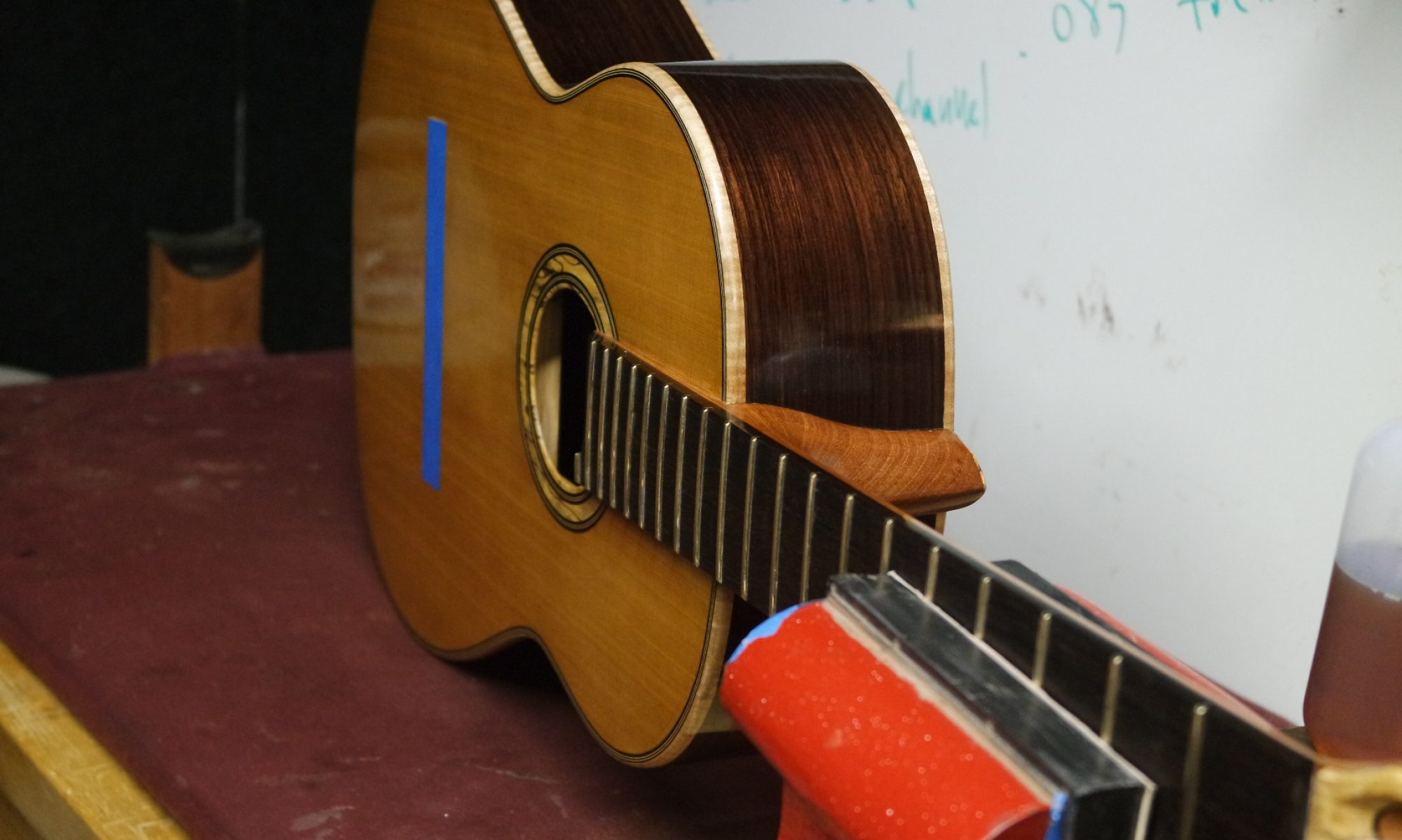Bracing patterns. They’re kinda like opinions and as…..errr…..rectums: everybody has one. To add even yet another variable to the mix, many players approach the purchase of their next instrument with a preconceived notion that a particular bracing pattern will yield a particular set of results. I was once on the consumer side, so I once was just as guilty of this.
Flashback to a time @23 years ago, when I visited a guitar dealer with a very large selection of guitars by many luthiers past and present. There were 2 guitars by >insert.name.of.a.world.renowned.luthier<. One guitar was braced in a very traditional fashion, while the other had very radical and “modern” bracing. This >insert.name.of.a.world.renowned.luthier< had recently told a publication the reasons for his radical and modern innovations. In this interview, he used all of the buzz words associated with modern lutherie at that time: “Louder”, “better projection”, “separation of voices”, “increased sustain”, etc. After playing a few dozen guitars, those preconceived notions were still in my head a bit when I got to those 2 guitars built by >insert.name.of.a.world.renowned.luthier<. So imagine my surprise when the modern braced guitar built by >insert.name.of.a.world.renowned.luthier< was rather quiet, dull, lifeless, and overall very uninspiring, while the traditionally braced guitar built by >insert.name.of.a.world.renowned.luthier< had a beautiful voice, impressive volume, and a projection that seemed to permeate every corner of the room.
To be fair, there were plenty of guitars in that showroom that day that had modern bracings that were very impressive…..and there were plenty of guitars that had traditional bracings that were very impressive. Not to mention, there were plenty of guitars from both camps that were rather lifeless and uninspiring. I came to 2 conclusions:
1) the bracing pattern in and of itself is just one variable among countless other variables that contribute to the tonal outcome of any given guitar, and..
2) the bracing pattern is unique to the individual builder, and the countless other variables also unique to that individual builder and to the mechanical properties of the tonewoods involved WILL contribute to the final tonal outcome.
When I was a student and a consumer back in the 80’s, there were basically 2 modern builders at that time whose guitars were in steady use among touring concert performers. One of them believed that in order to achieve even the smallest improvement, a luthier must make radical changes . The other firmly believed and practiced keeping the changes and variables from one guitar to the next to an absolute minimum, so that in the final tonal outcome, desirable changes could be noted and less desirable changes could easily be bactracked. My respect for those 2 builders is immense, but in this aspect, I tend to agree with the latter.
That said, the Bull Run Experiment continues, with all 3 tops thicknessed and graduated to the same dimensions, and braced as identically as I humanly could brace them, with the overall weight of each top currently within 2 grams of each other. I will get the weight exact from top to top before I attach them to their respective boxes, and then only one variable will be allowed on each.
Here we go:



